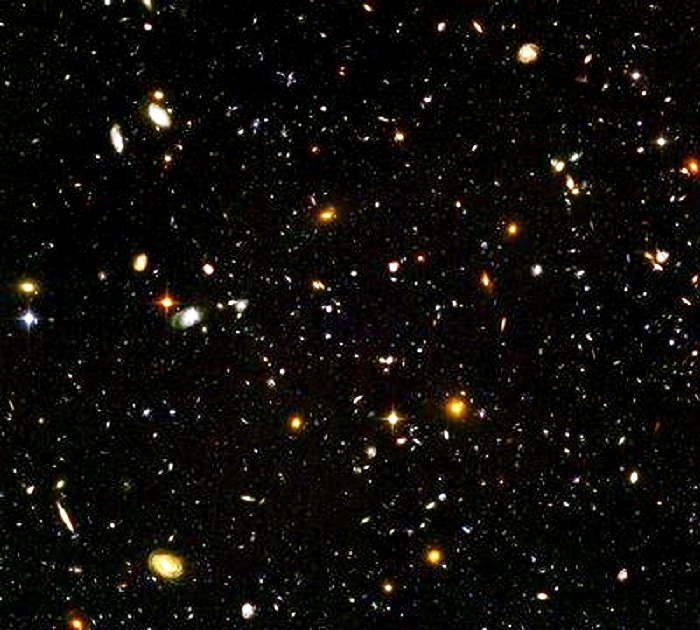.

UC Santa Cruz astronomer Sandra Faber speaks on 'the precious gift of cosmic time'
UC Santa Cruz astronomer Sandra Faber presented dazzling images of the cosmos and a sobering vision of Earth's future to a crowd of 400 at the UCSC Music Recital Hall.
Faber, a professor emeritus, has served on the faculty of UCSC since 1972, and is the interim director of the UC Observatories. Known for her work on the structure of the universe and the formation of galaxies, she was awarded the National Medal of Science by President Obama in 2013.
"This talk is about a group of people -- our species -- reaching a special point in their history. It's really analogous to the point that we all reach in life when we come of age," Faber said at Wednesday's lecture. "It means we're becoming self aware, we have a good idea of who we are, our surroundings and how we fit in, and we're using that knowledge to figure out what to do with the rest of our lives."
To illustrate our latest knowledge of the cosmos, Faber showed an image from the ultra-deep field of the Hubble Space Telescope. An exposure that took two weeks reveals distant galaxies that may have formed within a few hundred million years of the Big Bang, about 14 billion years ago. We can see 10,000 galaxies in this image, but if we could take such a picture of the whole sky, she said, we would see 100 billion galaxies.
Faber addressed the age-old question of whether life exists on other planets. "The key to understanding that is to understand whether our solar system is unusual or not," she said. "You can't put planets hospitable to complex life next to just any star."
She ticked off the factors required for the "Goldilocks zone" of a habitable solar system: not too hot or cold, with ample metals to form planets and far enough from regions replete with perilous black holes and comets.
Many properties of the planet itself must also be just right. Faber said she believes we'll soon understand whether Earth occupies a truly unique position.
After enumerating the scenarios that could someday destroy life on Earth -- the warming of the sun, a nearby supernova, an asteroid impact -- Faber said our current cosmic knowledge suggests we have at least 100 million years left on the planet. And our present mode of constant growth, she argued, is not the way to make use of this "precious gift of cosmic time."
"We got here according to the laws of physics and we are subject to those laws and must live within them," she said. "We can't be guilty of magical thinking in predicting our future."
Citing finite supplies of land and water, Faber called for humanity to reduce our environmental impact to one percent of its current level. She envisions a world population of just 50 million people, comparable to California's current 38 million and similar to the start of the Iron Age, around 1200 B.C.
Our modern technology, Faber said, gives us a special opportunity to understand our place in the cosmos and the reality of Earth's resources. "We are coming of age in the galaxy," she said. "I think the question is, are we really growing up?"
.
The Santa Cruz Sentinel
